250 SETTERS FROM EUROPE
SETTERS FROM MAINLAND EUROPE
by David Hancock


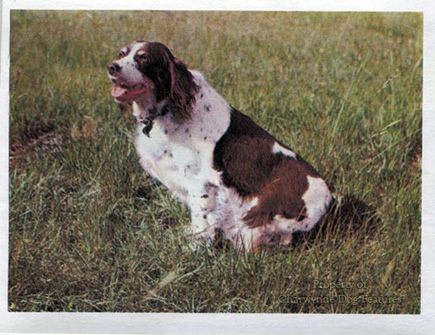
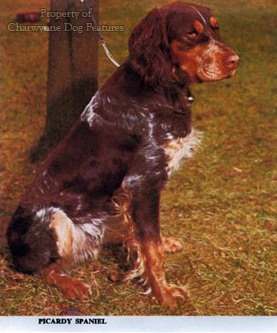
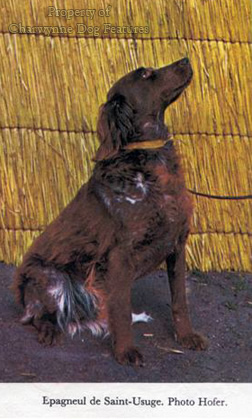 Any Briton interested in dogs, who has lived on the Continent and is familiar with the art galleries, museums and libraries of Amsterdam, Brussels, Rome, Madrid, Vienna and Budapest, must find the origin of our setter breeds, as described by our Victorian writers, more than a little ill-researched. Again and again, the writers on dogs in the 19th century saw the excellent gundog breeds which were then being stabilised in Britain through wholly British eyes. Youatt in 1854 wrote: "The setter is evidently the large spaniel improved to his peculiar size and beauty..." going on to repeat the old story of the Duke of Northumberland being in 1535 the first man to break-in systematically the setting dog.
Any Briton interested in dogs, who has lived on the Continent and is familiar with the art galleries, museums and libraries of Amsterdam, Brussels, Rome, Madrid, Vienna and Budapest, must find the origin of our setter breeds, as described by our Victorian writers, more than a little ill-researched. Again and again, the writers on dogs in the 19th century saw the excellent gundog breeds which were then being stabilised in Britain through wholly British eyes. Youatt in 1854 wrote: "The setter is evidently the large spaniel improved to his peculiar size and beauty..." going on to repeat the old story of the Duke of Northumberland being in 1535 the first man to break-in systematically the setting dog.
In 1878, the much-quoted 'Stonehenge' recorded: "The setter is commonly supposed to be the old spaniel, either crossed with the pointer or his setting powers educated by long attention to the breed...I believe it came to pass that the English setter imitated the pointer..." Drury in 1903, closer to the mark, considered that "The setter is probably the oldest and certainly the most elegant and beautiful of our gundogs. The ability to 'set' or 'crouch' at game was one developed in certain dogs by our sporting ancestors in the days when the hawk and falcon performed the offices of the modern gun."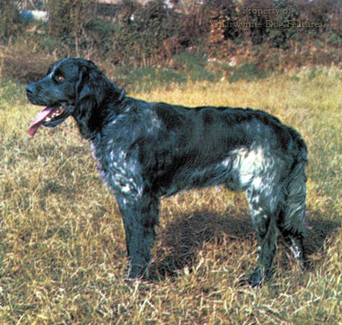
If you lined up a blue Belton English setter with a Large Munsterlander, a Brittany and a Welsh springer, a Stabyhoun and a black and white Langhaar, a Drentse Patrijshond and a red and white Irish setter and a solid-coloured Langhaar with a red Irish setter, there are few observers who would not argue a common origin. I believe it is unwise and insular to think of setter-breeds as coming purely from a Land Spaniel source, with added pointer, collie and hound blood, wholly in this country. The trading between Ireland and Spain, Wales and Brittany, London and Rotterdam, our south coast ports and their French counterparts over many centuries included trading in valuable hunting dogs, however different their employment.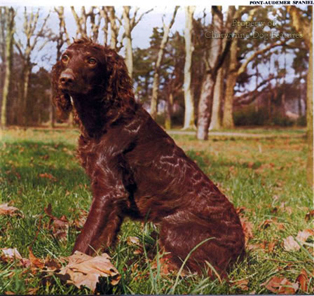
Espee de Selincourt, writing at the end of the 17th century and making early use of the generic term gundogs (chiens de l'arquebuse) separated the spaniels from the braques. He defined setting-dogs (chiens couchans) as "braques that stop at the scent (arretant tout) and hunt with the nose high...The spaniels are for the falcon (oyseaux) hunting with the nose low, and follow by the track." But before the use of firearms in the field of hunting fur and feather, the net was the most common device, with huge nets being drawn over both setting dog and the area containing the game being indicated. The earliest sporting dogs were probably the dogs 'da rette' (of the net) and the waterdogs, which would retrieve both arrows or bolts and duck. The 'oysel' dogs of the 16th century were much more setterlike than anything else. It could be that the expression chiens d'arret or stop-dogs is a corruption of 'da rette'.
The instinctive 'setting' or 'crouching' action was the essence of the meaning of the Old French verb s'espanir, from which I believe our word spaniel and the French noun epagneul comes, rather than from the word espagnol, just as we use functional words like point and set. The epagneul breeds of the Continent are rather more than setters in their sporting function, but that is a result of their wider employment, rather than any separate or different origin from our native setters. Just as pointers and hounds of the chase were imported from France, so too were setters. And there is nothing unusual in valuable hunting dogs moving from one country to another at any stage of recorded history. The ancient Greeks when settling in what is now Italy came across the Tuscan, a shaggy-haired dog which would actually point to where the hare lay hidden. But wolves have been known to display this instinctive hunting skill too. Man harnessed this instinctive behaviour rather than initiated it and all over Europe, before the invention of firearms, it was greatly valued, as many old prints of netting partridges reveal.
Although the comparatively recent introduction of pointing breeds from Germany, Italy, France and Hungary here as pedigree breeds is unusual in the gundog world, I believe they are following a traditional route, disturbed for a century or so by our preference for specialists in the shooting field, rather than hunt, point and retrieve allrounders. The setting spaniel was known all over Europe in the Middle Ages, but then, as until quite recently in Ireland, the words referred to what we now call setters or epagneuls. Our modern breeds of setter have of course developed in their own way throughout the last two centuries, but the setting dog is an established European type of sporting dog, evolving into separate breeds through local needs and preferences. It is dangerous to think of any breed in total isolation, whether gundog, scenthound, sighthound or shepherd dog.
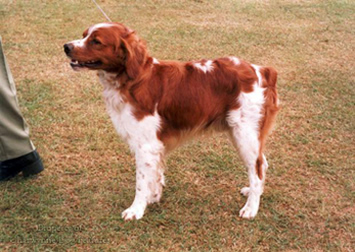
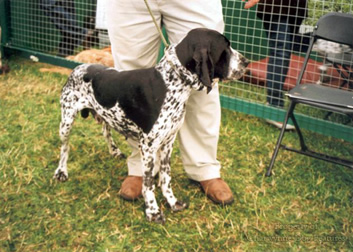
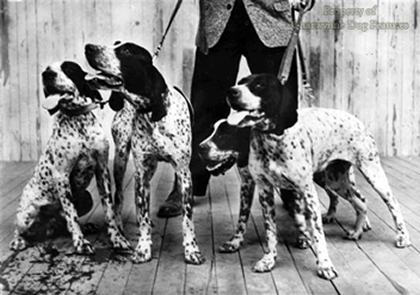
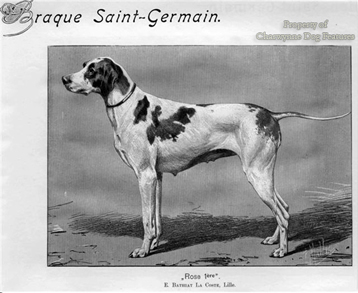
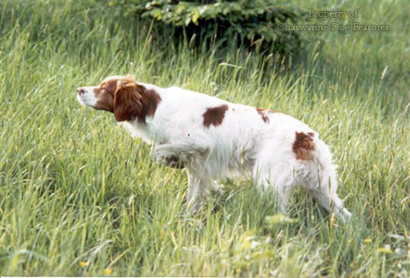 It is of interest therefore, remembering the common function of setters and pointers to look at the German pointer with its various co20ats, short, wire, stichel and long-haired. The short and wire-haired kinds are now well-established in Britain but the other two are largely unknown. The Langhaar is all setter in appearance and instinct. The two Dutch gundog breeds, the Drentse Patrijshond and the Stabyhoun, are also setterlike in physique and field behaviour. The Stabyhoun or Friesland setter is a sound versatile fussless working dog, staunch and biddable, robust enough to last a long day in the field and to be free of the many distressing inheritable conditions affecting gundog breeds. It resembles a small Landseer Newfoundland, whilst the Patrijshond looks more like the red and white Irish setter.
It is of interest therefore, remembering the common function of setters and pointers to look at the German pointer with its various co20ats, short, wire, stichel and long-haired. The short and wire-haired kinds are now well-established in Britain but the other two are largely unknown. The Langhaar is all setter in appearance and instinct. The two Dutch gundog breeds, the Drentse Patrijshond and the Stabyhoun, are also setterlike in physique and field behaviour. The Stabyhoun or Friesland setter is a sound versatile fussless working dog, staunch and biddable, robust enough to last a long day in the field and to be free of the many distressing inheritable conditions affecting gundog breeds. It resembles a small Landseer Newfoundland, whilst the Patrijshond looks more like the red and white Irish setter..jpg)
The French counterparts of these Dutch breeds are the Epagneuls Breton, Francais, Picard, Bleu de Picardie and de Pont-Audemer. If you add to these setterlike breeds the braques, such as Saint-Germain, d'Auvergne, d'Ariege, Dupuy, du Bourbonnais and Francais (in two sizes), and include the Korthals Griffon now regarded as a French breed, our nearest Continental neighbours have plenty to choose from in the HPR family. A half century ago the Epagneul Francais was getting almost St. Bernardlike in build but is nowadays more like our red and white and the Patrijshond. The Brittany is well established here, with 150 new registrations each year. The other French breeds are largely unknown in Britain.
The German setters, the long-haired variety of the Weimaraner, the Langhaar, the Large Munsterlander and its smaller variety, the Westphalian setter, are attractive breeds, but only the Large Munsterlander is established here, with around 100 registered each year. Many of my Dutch shooting friends favour the Langhaar ahead of their own native gundog breeds. But when I lived in Westphalia, it was the Small Munsterlander that caught my eye. If you can imagine (and stomach!) an English Springer with a tail and pointing game then you virtually see a Small Munsterlander. Around 21" at the shoulder and 50lbs in weight, they breed more evenly than our working Springer and retain their own breed type.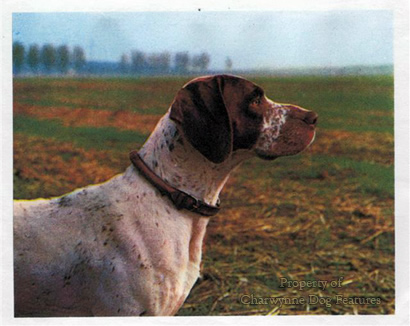
I have never seen a long-haired Weimaraner in the shooting field but they are good-looking dogs and of genetic importance. No doubt plenty of long-haired pups cropping up in litters have been put in the bucket; when are we going to learn to value dogs for what they can do rather than what they look like? Field Trial Champion Freebirch Vincent, a black and white Gordon Setter would have been culled by many misguided show breeders. Many years ago when I lived in Sussex, I came across a man thrashing a spaniel in a wood near my home, solely because it had a strong instinct to point unseen game. He said that the dog was embarrassing him. When I told a German Forstmeister of this incident he made some extremely unkind remarks about British sportsmen's attitudes to working gundogs!
British sportsmen are at last really beginning to understand the HPRs. Whilst we haven't always imported the best stock, or indeed the best breeds for the country we shoot over, I see little to convince me that we make the best use of the strong points of the all-rounders. The French, the Dutch and the Italians still appear so much more enlightened over their utilisation and training. They seem to get wider ranging, better nosed, more whistle-conscious, softer-mouthed and infinitely more stylish dogs than we. I still come across British sportsmen trying to make spaniels and retrievers out of them and then complaining. A gifted sportsman like Coke of Norfolk would have had the country, the knowledge and the wit to have used them to their full potential. 
However misused or under-utilised, whatever their origin, instinctive behaviour or contemporary breed-form and however bleak their working future, the European setters are a most distinctive sporting type. Their noble patronage, high breeding and aristocratic style bring a touch of glamour and class to the world of the working gundog. Their remarkable physical similarity to the British setter breeds hint strongly of a common heritage, their design for a different manner of shooting notwithstanding. In 1563, Lord Warwick wrote to his brother the Earl of Leicester, from Le Havre: "I thank you for sending me so fine a horse. In return, I send you the best Setter in France..." Wealthy sportsmen have never allowed international boundaries to keep them from a good dog.
Foreign dog historians like Tschudy claim that the setting breeds originated in North Italy in Roman times, whilst Tale links the roan Spinone with the silkier-haired dogs of Lombardy and Venetia. Our Victorian writers had probably never benefited from an input from overseas; at that time the British were famous throughout the Western world as livestock breeders, especially of dogs. But whatever the origin the future of the setter breeds whether Continental or native rests with today's sportsmen; the show breeders’ obsession with rosettes and interpreting the breed standard to suit their personal whim can only lead to degeneration. This is a heavy responsibility -- but as Laverack and Llewellin proved, it can lead to immortality!
.jpg)
